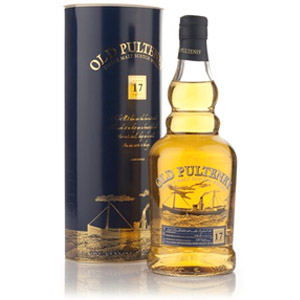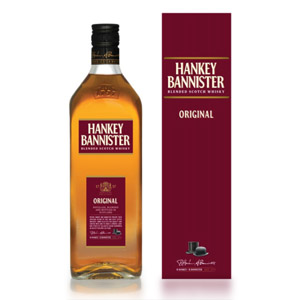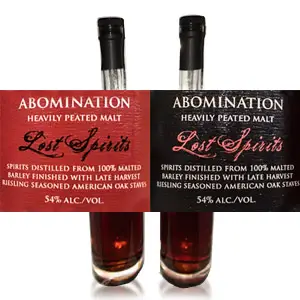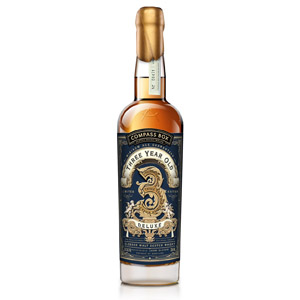What does briny mean, in a tasting note? How do you smell brine? It’s not just the salt… salt alone has no smell. Try pouring a cup of salt into two cups of hot water, let it dissolve, and smell. Nothing. Brine in a tasting note must refer more specifically to the essence of the ocean – or more exactly – the shore. Seaweed, algae, and the many minerals and microflora present in oceanwater contribute to the unmistakable scent and taste of the sea. It may also be more accurate that ‘brine’ smells like ocean air, not ocean water. For me – a childhood memory perhaps – the scent is inextricable from the flavor of fresh, soft saltwater taffy.
The debate has been raging (hyperbole if ever there was) for decades about whether coastal whiskies such as Talisker and Old Pulteney truly smell or taste like the sea air in which they mature. The arguments, largely un-provable, are based on the probable fact that air laden with oceanic compounds enters and interacts with the whisky as the casks “breathe” during their maturation. Thus, whisky aged in the presence of sea air (especially turbulent seas, and where the wind is extreme) will absorb some of that briny character, while casks aged inland will not. This would be arguably the closest whisky gets to wine’s terroir – the influence of the land on the final product. Detractors argue that the effect, if it happens at all, is minuscule and the briny notes are solely the products of suggestion.
I think Old Pulteney has characteristics of brine, so I guess I’m on the side of the terroir-ists (see what I did there?). I also noticed some tart cherries, which might be attributable to the 10% oloroso sherry aging. The rest of the malt is aged in ex-bourbon. The 17-year is not chill-filtered, and is bottled at 46% ABV.
These days you can’t talk about Old Pulteney without discussing whisky writer and author of Jim Murray’s Whisky Bible, Jim Murray, who in 2012 awarded Old Pulteney 21-year with his “2012 Best Whisky in the World” title. This caused a flurry of sales for the previously sedate line of products, and a flurry of Internet commentary about whether Jim Murray is just stirring up trouble. I don’t have any of the 21, but let’s proceed on the assumption that the 17 is similar enough.
Nose: Yup. Brine. A definite whiff of freshly-trodden seaweed on a windswept shoreline… yes, whisky always makes me wax poetic. Seawater and something citrus: lemon saltwater taffy. Tangy peat – like Highland Park‘s. Tart cherries. The buttery salted caramel and marshmallow malt character is somewhat buried beneath the tartness, but it’s there. Very nicely crafted – statuesque and gruff, but potent and flavorful.
Palate: Soft. Lively tongue burn. Some light barrel char and malty caramelized grains. The tip of my tongue picks up some of those tart lemon/cherry notes. The rest tastes like somewhat standard bourbon-aged single malt.
Finish: Medium long. Principally sweet – caramel again. Driftwood fire smoke. Vanilla saltwater taffy now. Fades with smoked lemon peels. Many writers call it ‘dry’, but I don’t get that.
With Water: Water makes the nose a little too sharp – although it awakens some mild fruitwood smoke notes. The water does a nice job of taming the tongue burn, and spreads out those lemon – now lemon custard – notes across the whole palate. Try without the water first, and then see if it does anything interesting for you.
Overall: Unless those additional four years cause magic to happen, I don’t agree with Jim Murray. It is a tasty, straightforward malt with an excellent tart/briny nose and some interesting smoky notes on the finish. It can’t compete with Islay for peatiness, nor with Highland Park for value (especially after the prices shot up with the Whisky Bible award). If you’re a fan of the briny/tart character and can’t get enough of Highland Park and Clynelish, then this is probably a must-have for your shelf. If not, maybe it’s worth buying a special-occasion bottle to try for yourself to understand what Jim Murray thinks is so wonderful about the distillery.


About The Distillery
Using water rising from the stone in Caithness, a barren rocky coastline in Scotland’s far Northern Highlands, Old Pulteney was built in 1827 to supply local herring fishermen with a few drams to warm them up after (or during?) their windy work. The distillery uses the town water supply, which is pumped from the Loch of Yarrows to the south. The distillery’s stills are unusual, with large boil-bulbs and lyne arms that twist as they descend sharply into worms. Old Pulteney lies at the center of the debate about salty character in whisky, as its maritime influence is undeniable. Its coastal warehouses, constantly battered by the brine-laden gusty winds of the northern Atlantic, certainly smell of the sea. Those warehouses hold a small percentage of Old Pulteney aging in sherry casks, but the majority rests in ex-bourbon. The spirit is filled into distinctive bottles with a bulb in the neck that evokes the shape of the site’s stills.








If you want more on the cheap, Hi-Time has a 2×375 mL pack of the 12 YO and 17 YO for $40. What says there aren’t any good deals left in scotch whisky?
I haven’t tried the 17, but I wasn’t impressed at all with the 12. Would not buy another bottle of it, as there are many other better scotches out there for a similar price. I am curious as to why “experts” find it so wonderful.
With Jim Murray there seems to be a pattern as to which distillery gets his praise. A few years ago it was Ardbeg for a couple of years in a row, then Sazerac rye and lately Old Pulteney (a more unlikely candidate, I cannot imagine).
I sometimes wonder if his praise is linked to lucrative consulting contracts for the very same distilleries that become “winners” in his bible.
I have not tried the 17 – but have tasted both the 12 and the 21.
I find them to have some strong similarities – bet the 21 is richer fuller smoother version. The lemon and Carmel are.present in the 12 – but much better developed in the 21. I found a lot more sweetness in the finish of the 21.
But the OP is not for everyone – whatever age – I tasted the 21 vs the Balcone and the Texas SM won hands down IMHO.
I have to disagree with Robert and come to the defense of the OP 12, which I think is very tasty and pleasant. It’s also quite a bargain. When I run out, I always get another bottle.
Which other Scotches are better for a similar price? The Benromach Traditional? The AcNoc 12? The Ardmore Traditional Cask? All as good, yes, and all great deals. But not better.
I’m glad you enjoy it, but can you explain why? Rally also likes it, but he also likes Bunna 12 (not in my flavor range) and Black Bottle (scotch swill). I assume it’s just
personal tastes.
I haven’t had the Benromach, but find the AnCnoc and Ardmore significantly better.
how long have you been drinking SMS Robert?
I’ve been a SM guy since 1983. Long enough? Sorry it took so long to reply, but I haven’t checked this review in a year as I don’t have interest in OP.
like any scotch – if you like it you like it, if you don’t you don’t.
I’m a regular fan of the OP 12, like any scotch it can taste different from day to day or from glass to glass.
I guess what you can say about OP 12 is that it’s a good straight ahead scotch, which some people might thing boring, and other think good.
As for me – I can find it just OK at times, and then very delightfull at others. I guess you could say that about your wife too – love is a strange thing in deed.
In reference to what you mention about picking up the sea air when maturing. 95% or more of Talisker is matured in the central belt of Scotland so would be hard pressed to pick up much sea air there. Same goes for so many other “Coastal” distillery’s. Not sure how much Pulteney is matured onsite.